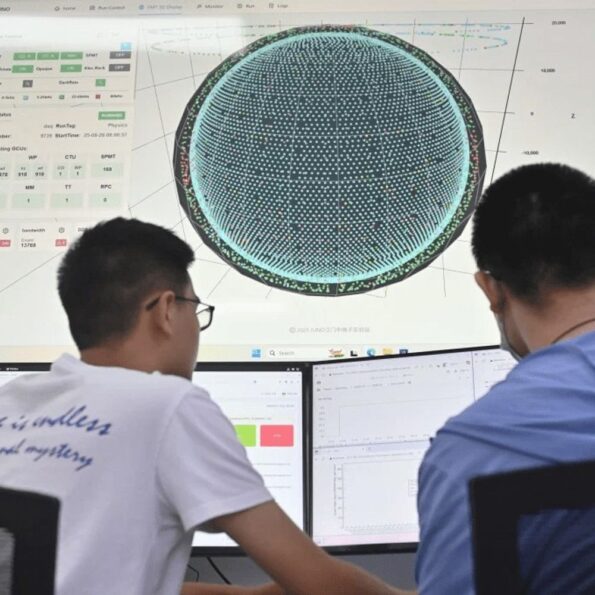China builds world’s most powerful ‘Ghost Particle’ detector:According to SCMP, China has begun operating Juno, the most powerful facility to study ‘Neutrinos’

China has officially launched the Jiangmen Underground Neutrino Observatory (Juno) in southern Guangdong, marking a major leap in particle physics. Buried 700 metres below the surface, this facility is the largest neutrino detector in the world and has now begun collecting data. The mystery of Neutrinos Neutrinos, often called ghost particles, have no electric charge, almost no mass, and travel close to the speed of light. Understanding them could unlock answers about the universe’s hidden laws. Juno’s mission is to study the mass and behaviour of neutrinos produced by two nearby nuclear power plants in Taishan and Yangjiang, about 53 km away. Engineering a marvel At Juno’s core lies a 20,000-tonne liquid scintillator detector a massive acrylic sphere 35 metres in diameter, submerged in a deep pool of ultra-pure water. Thousands of photomultiplier tubes line the setup, capturing faint flashes of light created when neutrinos interact with the liquid. These signals are then transformed into electrical data for analysis. The construction was no small feat. According to chief engineer Ma Xiaoyan, it required years of precision work, strict purity standards, and the dedication of hundreds of experts. The filling process alone was a marvel: within 45 days, 60,000 tonnes of water were carefully balanced, followed by 20,000 tonnes of scintillator liquid added over six months. A global effort Though led by the Chinese Academy of Sciences, Juno is truly international. Over 700 researchers from 74 institutions across 17 countries contributed. Physicist Gioacchino Ranucci from the University of Milan highlighted how global expertise in liquid scintillator technology shaped Juno into a groundbreaking project. Unlocking the Universe’s secrets Particle physicist Wang Yifang, Juno’s spokesperson, called the launch a “historic milestone.” He emphasized that, for the first time, science has a detector of this scale and precision solely dedicated to neutrinos. Juno’s scientific mission could last up to 30 years. Future upgrades may even allow it to search for neutrino-less double-beta decay, a process that could prove whether neutrinos are Majorana particles meaning they are their own antiparticles. Such findings would reshape our understanding of matter, astrophysics, and cosmology. Leading the next era of neutrino research Juno is the first of a new generation of massive neutrino observatories to go live. Similar projects the Deep Underground Neutrino Experiment in the U.S. and Hyper-Kamiokande in Japan are still under development and expected around 2027-28.
Search
Recent
- No ‘power to impose tariff’: US court declares most Trump tariffs illegal; judge cites overreach
- Punjab sees falling enrolment, strain in teacher-student ratio in schools
- Flood relief efforts continue in Punjab
- On camera, Punjab ministers heard chatting about luxury cruises while on flood tour
- Onam travel woes: Skyrocketing fares dampen festive spirits for Bengaluru’s Malayalis





